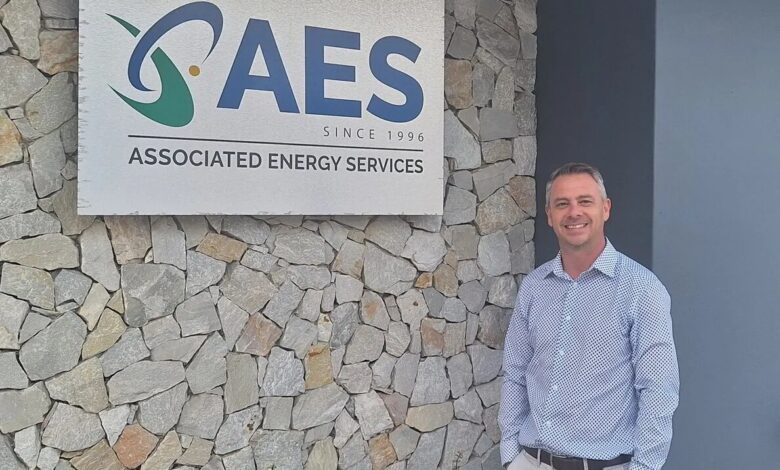Fuelling Progress: AES Advises Local Industry On How Best To Benefit From Biofuels

Fuelling Progress: AES Advises Local Industry On How Best To Benefit From Biofuels. The local manufacturing and industrial sector is showing increasing interest regarding switching to biofuels as a fuel source. However, the biomass fuels market is mostly still in its infancy, making it extremely challenging for South African companies to make the right decisions when moving away from traditional fossil fuels.
“Quite often the available information on biofuels is varying and it can be difficult to get the facts – based on experience – to support a decision. Therefore, a local energy optimisation partner’s knowledge can be invaluable,” says Dennis Williams, Commercial Director of Associated Energy Services (AES), a leading operations and maintenance service provider to the steam and boiler sector. “In AES’s case, clients benefit from our hands-on experience and knowledge of fuel sources and thermal energy options. The final decision depends on individual clients’ needs and their short-, medium- and long-term objectives,” Williams explains.
Although the drive for a switch to biofuels is the reduction of emissions, Williams says carbon accounting can be a contentious topic, with the view that biomass is carbon neutral, resulting in the promotion of the use of biomass, even though more carbon dioxide is emitted than the same energy plant would using coal: “This is because the actual stack CO2 emission per unit of thermal energy is higher. However the CO2 emitted from biomass combustion is deemed to be absorbed by biomass that grows to replace that which has been used,” he points out.
In practical applications, it should also be considered that the chemical composition of wood includes alkaline metals such as sodium, potassium and high chloride levels. Chemical interaction between the fuel components and the furnace refractory lining at high temperatures increases corrosion levels, elevating maintenance costs.
“Furthermore, biomass is can be contaminated with sand, grit and dust. Silica-based, this interacts with the biofuel components inside a furnace, resulting in fouling and slag formation,” points out Ray Lund, Operations Director of AES. Lund advises that biofuels also present ethical challenges to some companies: “When asking clients which operate on biomass why they had strict and narrow policies when sourcing fuel, we learnt that they wanted to ensure they were sourcing ‘genuine waste’ as fuel – rather than residue that was produced by cutting down trees specifically for fuel.”
One prospective client presented AES with a sliding scale of the most appropriate to least desirable choices of biofuels. Going forward, Lund believes that blue chip companies will increasingly drive ethical sourcing and require biomass to be certified as a fuel.Even then, due to the quantum of energy required for the thermal process, larger industry has limited choices of fuels which can support the significant level of energy supply required. “An added consideration is the ability of biomass-fuelled boilers to respond to changes in load or steam demand. “Solid biofuels, in general, respond slowly. If you have a very erratic steam profile on a pressure-sensitive process, solid biofuels are less suitable,” points out AES Projects Director, Gavin Evezard.
Then, there is also a misconception that because it is widely regarded as ‘green’, biomass combusts easily. “Current biomass-supplied steam combustion requires high levels of on-site skill and could potentially result in downtime should problems arise. Most biomass technologies have been developed on other continents and are not necessarily suited to local conditions. Global shareholders also often decide on a worldwide shift to biofuels – without fully appreciating different markets’ responses to the added costs,” Evezard remarks.
Furthermore, as the energy density of biomass is low compared to that of fossil fuels – not only is additional storage space needed on site, but more equipment is required to move up to four times the volume of feedstock to the plant. Notwithstanding its inherent challenges, Evezard notes that there is a definite place for biofuels and, as a fuel-agnostic partner to industry, AES is ideally positioned to assist manufacturers to navigate any potential obstacles.
Williams advises: “Before embarking on a biomass journey, you need to look at what plant and equipment you require, get an idea of the costs and, simultaneously, look at fuel sourcing. If significant capital expenditure is required, you must ensure there is an available – and affordable – fuel source for the duration of the life of the plant. So, entering into negotiations with potential suppliers and concluding long-term supply agreements, including potential year-on-year price escalations is imperative.”
Evezard warns that one of the major frustrations is that biomass suppliers are not necessarily willing to enter into long-term agreements: “Some suppliers want to leverage the value of a commodity that currently has limited value and no pricing track record, knowing that it might gain value within a short period. Those that move early and manage risk properly can benefit. As one of the first, resources will be readily available and affordable. Those who enter the biomass market later may have to spend more and carry more risk.” Lund emphasises that a local partner such AES should be part of the process from the outset.
“We can provide support and overcome any of the challenges which we have outlined – however the fundamentals must be right. The technology needs to be suited to the fuel and the fuel must work with the design of the plant,” he concludes.




